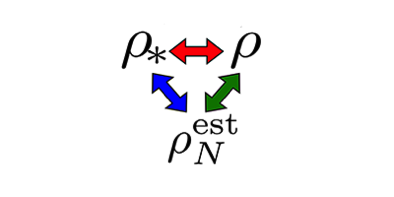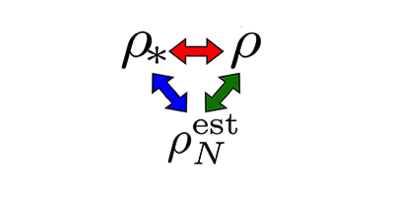Building a Better Quantum State
All quantum technologies, from cryptography to computing, rely on the precise preparation and characterization of quantum states, i.e., the wave functions of a particle or an ensemble of particles. But wave functions cannot be directly visualized to verify that such states have been correctly prepared. A technique known as quantum tomography offers a possible solution: much like classical tomography, which records 3D images by putting together 2D projections, quantum tomography characterizes the complete quantum state through a series of projective measurements, for instance, the different polarization states of a photon. But so far researchers have not been able to develop a rigorous method for determining how close a tomographic reconstruction is to the real quantum state.
In a paper in Physical Review Letters, Takanori Sugiyama and colleagues at the University of Tokyo, Japan, now report they have derived new quantitative formulas for calculating the precision of quantum tomography. After a set of states has been prepared and characterized by a series of measurements, the algorithm can determine how close such states are to desired target states. Their protocol has important advantages over competing approaches: first, given a sufficient number of measurements, it can guarantee that the state estimated by quantum tomography is arbitrarily close to the true state. Second, the formulas depend only on parameters that can be extracted from the measurements and not on a priori assumptions on the true prepared state. The method can be applied to a broad class of experiments and adapted to the most commonly used ways of measuring the “quantum distance” between states. – Matteo Rini





